Customer experience is important. Sure.
But the expectations of customers are also growing rapidly. So, how can your company use all this customer data to find new ways to create a better customer experience?
We did a deep drive of recent customer experience statistics ourselves. The stats below highlight the current state of customer experience, including:
- Experiences that annoy and delight customers
- How companies measure their customer experience data
- The cost of not investing in better customer experiences
- The tactics today’s businesses are rolling out to meet their customers’ expectations
- Trends and strategies that customer-centric companies should adopt
🔍 Access Metrigy’s free report to learn more about the 2022 state of customer experience technology.
Let’s dive into our 27(!) customer experience stats for 2020 and beyond.
1. 50% of customers say it’s “very important” to speak to a human before making a big-ticket ($1,000+) purchase.
Takeaway(s): Sure, we often hear about the explosion of chatbots and social media as communication channels. That doesn’t mean that companies should totally drop their phone support, though.
Quite the opposite, actually. Potential customers who are considering big-ticket items are the ones most likely looking for clarification and reassurance prior to making a purchase. Although self-service portals and tutorials can answer some of their questions, they’re not good enough replacements for humans (yet).
Invest in customer service software that offers reliable, real-time communication with your customers. Rather than leave your would-be customers hanging, give them the option to talk to a real-life person, especially if you’re selling an expensive product or service—it just might seal the deal.
2. When customers call a company, they’re most annoyed by long hold times (73%) and being transferred to a new agent (70%).
Takeaway(s): Simply accepting phone calls isn’t enough to provide a stellar customer experience: it’s what happens after someone dials that really matters.
Endless hold times and transfers are conversion killers. On the flip side, companies that have good average handle times and can respond swiftly and resolve questions quickly are well on their way to providing consistently great customer experiences.
Learn more about agile customer service.
Again, this is where tools like RingCentral come in handy. Features like automated routing and call forwarding mean that your priority calls get answered ASAP:
RingCentral’s dashboard gives you one convenient place to log all your customer interactions, meaning they can get a consistent experience—even if they’re not talking to the same agent as last time.
3. 42% of customers call a company to either complain or change their service.
Takeaway(s): It’s no secret that customers calling you might not exactly be thrilled about being on the phone.
Given that just under half of your calls represent customers potentially leaving you, it’s important to have a plan of action to address these complaints. This might mean escalating the call to a manager or someone better suited to handle the issue. From pricing concerns to slow service, the ability to anticipate problems and prepare a solution means being proactive.
Also, customer service skills like patience and empathy are crucial for agents to deal with difficult customers, regardless of their situation. Being sensitive to your customers’ concerns ultimately helps you hash out their problems without running the risk of losing those customers long term.
4. 66% of companies are seeing an increase in tickets and service requests from digital channels.1
Takeaway(s): As we mentioned in earlier customer experience statistics, there’s no “one-size-fits-all” channel for service.
Phone. Chatbots. Social media. The list goes on and on.
The growing demand for omnichannel customer service is a clear sign that companies need to have a presence across social media channels and the web in general when it comes to support.
Tools like RingCentral’s digital customer engagement platform allow you to consolidate your support into a single channel, meaning your team doesn’t have to keep switching between platforms and windows.
If you’re doing a lot of online customer service, it’s also important to be able to track your agents’ activity through in-depth customer service KPIs and call center metrics. This can help you prioritize channels and uncover ways to speed up your support, creating those great experiences that keep your customers coming back:
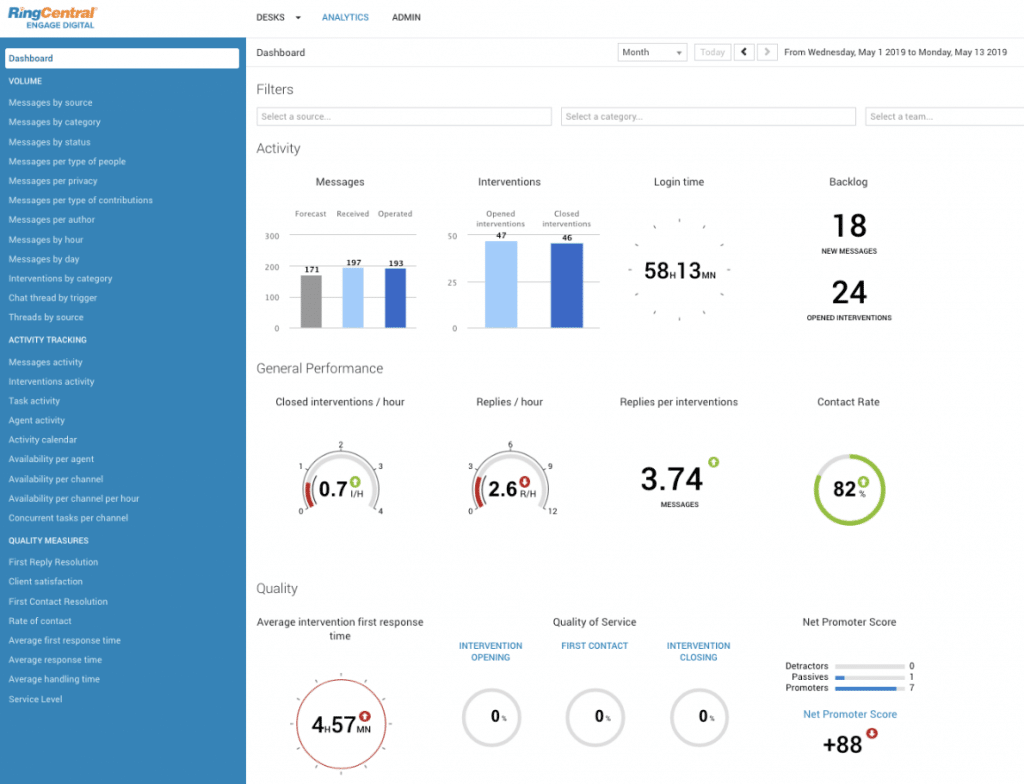
RingCentral’s Contact Center dashboard shows you everything you need to know about how your customer service is doing
5. 75% of customers under 40 expect businesses to have a chatbot service option (compared to only 33% of those aged 56+).2
Takeaway(s): Chatbots and live chat are heavily used among the younger crowd. Although providing this kind of automated customer service was once an exception to the rule, now it’s a customer expectation.
This again speaks to the need to adopt an omnichannel presence for support. If your target audience skews young, use a robust live chat solution that allows your team to provide comprehensive service to multiple customers on multiple channels at once:
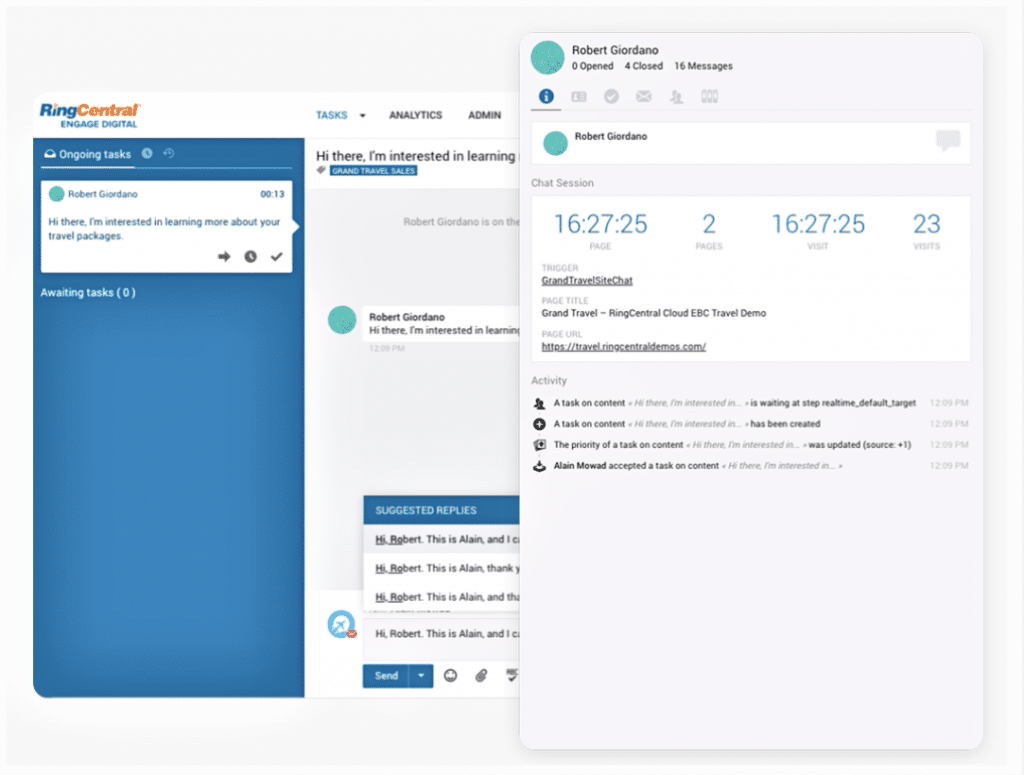
6. 63% of high-performance businesses say their agents are spending more time problem-solving complex issues for customers.3
Takeaway(s): Agents need to level up beyond providing great experiences. Doing this means having deep product knowledge and the ability to be hands-on with customers.
For example, an agent providing software support should go beyond pointing customers to a tutorial or video. Instead, they should share their screen to walk the customer through step-by-step to resolve the issue. (Learn more about screen sharing tools.)
To be an effective agent, you need to have good problem-solving skills—and customer service teamwork. (If you’re the one doing the hiring, you should consider this while both hiring and onboarding your support teams.)
Learn how to provide a better customer experience with this free guide.
7. 80% of customers say the experience a business provides is just as important as their product or service.4
Takeaway(s): Consumers are spoiled for choice in terms of products to buy and businesses to support. Whereas someone can easily switch service providers, experience is the sort of intangible factor that can’t be bought or replaced.
That means your ability to provide a positive experience is your superpower. Adopt a customer-centric strategy that aligns everyone in your company and gets every team to focus on improving the customer experience.
8. 39% of professionals say that partnering with other departments is critical to providing a great customer experience.5
Takeaway(s): Your customer support team members aren’t solely responsible for creating positive experiences for customers.
They shouldn’t be, either. Think about it. Sales teams have firsthand knowledge of your customers’ motivations and desires. Meanwhile, marketers need to be able to translate those desires into messages that result in more customers.
Ideally, all of the above should be working together.
That’s where effective teamwork makes a difference. For example, RingCentral’s desktop and mobile apps make cross-functional collaboration easy. From sharing resources to answering questions with other departments via real-time messaging, teams can also hold video chats and check-ins without having to schedule in-person meetings.
This sort of open communication is key to creating the sort of customer-centric culture we mentioned earlier.
9. 84% of customer service professionals say a “unified view” of customer information is key to providing a great experience.6
Takeaway(s): The more you know about your customers, the better.
Having crucial information such as someone’s purchase history and contract preferences makes it easier to both get in touch and recommend solutions.
Keeping all of your customers’ information stored in a CRM can help. For example, a platform like Zoho CRM is somewhere that sales, marketing, and support can see a comprehensive history of any given customer. This provides a single place for your company to track its customer touchpoints.
Integrating your CRM with business phone services like RingCentral also allows you to conduct customer calls without having to bounce between platforms:
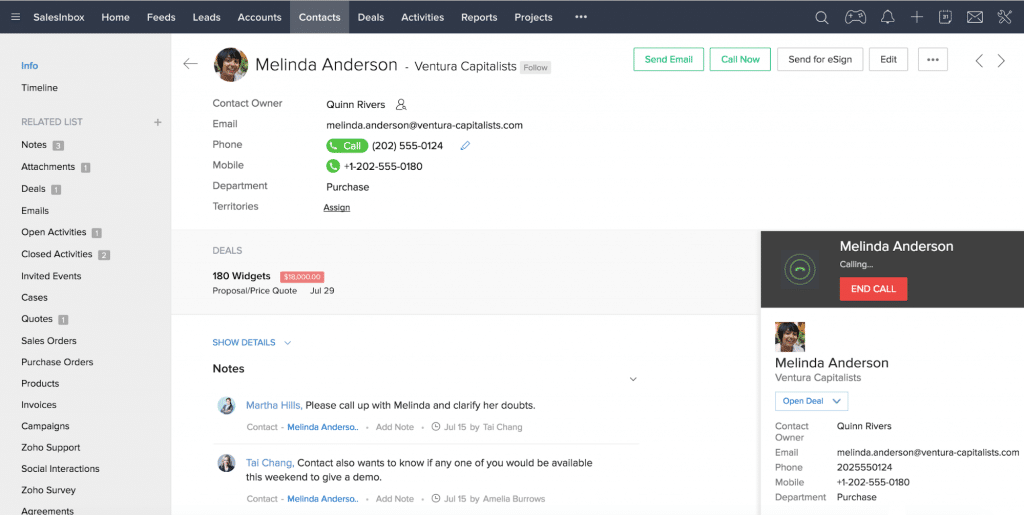
The same study for this statistic also notes that 55% of agents have to toggle between multiple windows to serve customers. Consolidating your communication tools prevents you from wasting so much time.
10. 70% of customers believe that a single phone call should be enough to get in touch with a company.
Takeaway(s): These customer service statistics highlight how high expectations are today.
Providing “good” phone service means picking up the phone and responding ASAP, not letting inbound calls gather cobwebs in a voicemail system. Again, RingCentral’s platform ensures that calls are routed to agents in a timely manner that doesn’t leave customers hanging.
Learn more about first call resolution standards.
11. 48% of businesses are tracking the financial ROI of customer experience improvement projects.7
Takeaway(s): According to Gartner’s customer experience data, approximately half of customers actively assess the ROI of their CX (customer experience) efforts.
And rightfully so. After all, companies shouldn’t blindly invest in new initiatives and resources without understanding their returns. Although experience might seem like something totally qualitative, data points such as customer retention rate and lifetime value (LTV) help highlight whether or not your efforts are paying off.
12. 60% of large organizations plan to build a “customer experience hub” by the end of 2020 (but only half of those companies will get it right).8
Takeaway(s): If given the opportunity, customers will gladly take issues into their own hands before immediately hopping on the phone with an agent.
That said, many companies aren’t giving customers those opportunities. The beauty of self-service portals is that they not only empower customers to learn more about your service but also free up time for your agents.
Don’t just throw up a “contact” or “FAQ” page and call it a day. Taking the time to build out a knowledge base that includes frequently-asked-question breakdowns, how-tos, and videos is a worthwhile investment (see Adobe’s below).
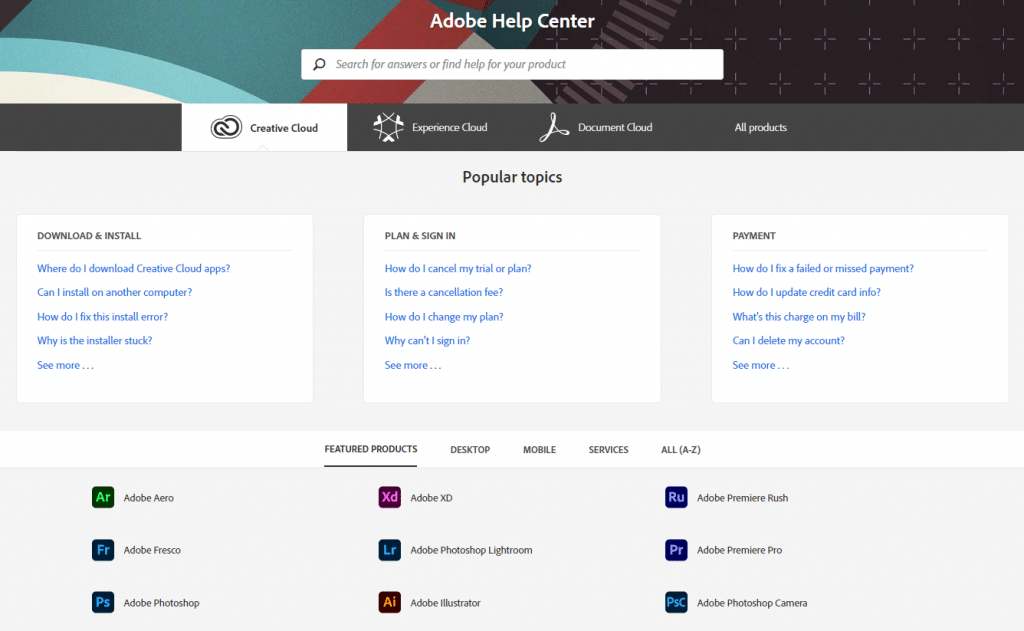
13. According to B2B customer experience leaders, 58% say mapping out the customer journey is “very important.”9
Takeaway(s): Providing a positive customer experience doesn’t have to be reactive.
Look at your satisfied customers. What do they have in common? What are their motivations? What interactions do they have with your business to stick around for the long haul?
As noted in our guide to customer experience, businesses need to assess every step of the customer journey to figure out where to improve. Learn how to create a customer journey map template and user personas that can help highlight new ways to delight your customer and provide those ever-so-important experiences.
14. Among the metrics used to measure customer experience, retention rate (65%) and satisfaction (65%) are considered the most important.10
Takeaway(s): It is possible to track your customer experience via customer experience analytics. Whether or not you’re doing a “good” job doesn’t have to be a guessing game.
Businesses should obviously make decisions based on data. Conducting customer experience analysis means calculating metrics such as retention rate, satisfaction, and LTV to understand whether or not your customers’ expectations are being met.
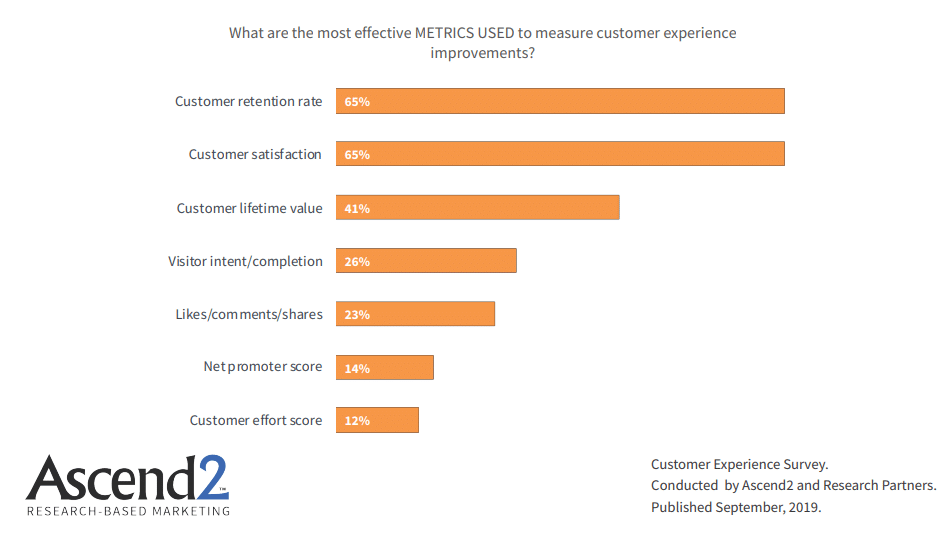
15. 56% of companies say “deriving real-time insights” is the top challenge of improving customer experience.11
Takeaway(s): Companies looking to provide positive experiences can’t rely on spreadsheets or old data.
Instead, consider how modern customer service apps, your CRM, or your communications platform can log interactions so your customer information is always up to date. Coupled with workflow automation, companies today can sync all of their customer data across platforms to make decisions in real time.
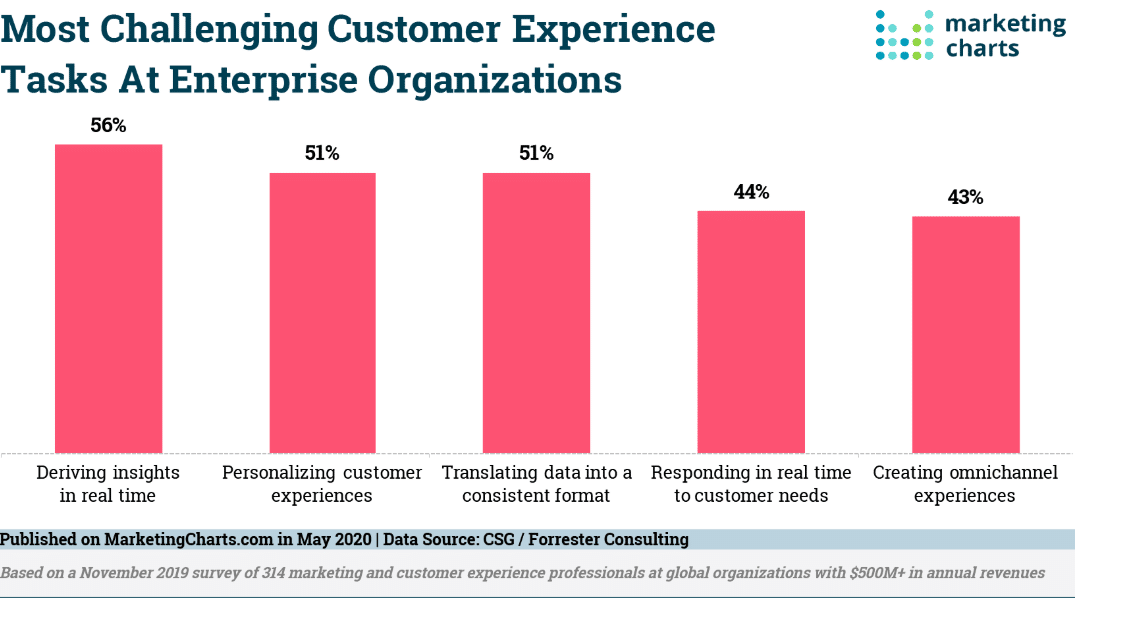
16. 37% of companies say they’re investing in customer experience because they’re losing business to their competitors.12
Takeaway(s): Good customer service results in better customer retention.
The data from this customer experience report is telling in terms of what happens to companies that don’t prioritize experience. In a day and age where reviews and digital word-of-mouth influence customers so much, being customer-centric is crucial to keep your people from bouncing to a competitor they heard about elsewhere.
17. The top industries that consumers had a “bad experience” with within the past six months include TV/ISP (17%), health insurance (10%), and car rental (10%).13
Takeaway(s): Certain industries do need to step up their game when it comes to complaints. Don’t become a bad customer service story. If your business falls into one of these categories, acknowledge your upset customers and consciously focus on improving the experience. That’ll get you on the way to setting your business apart from the crowd.
18. 28% of customer service leaders cite social media engagement and analytics as “top priorities” for their organizations in 2020.14
Takeaway(s): You don’t have to look hard to find customers bringing their questions and concerns to social media. The fact that social complaints are transparent puts pressure on businesses to reply swiftly. Failure to do so makes you look aloof or otherwise uncaring.
On the flip side, companies that reply to concerns often get shown a lot of love via social.

Additionally, platforms like Twitter are great for you picking your customers’ brains and uncovering problems that your customers at large share. With this information, you can explore new ways to improve your customer experience.
19. Companies that collect at least six types of digital feedback are 4x likely to become a customer experience leader.15
Takeaway(s): Providing multiple channels means flexibility for your customers. That flexibility goes hand in hand with good customer experience.
For example, consider how most major companies today boast a variety of customer feedback options (see Chase below) including:
- Phone
- Social media
- Live chat
- Chatbots
- SMS

20. 78% of customers claim that they’re more inclined to be loyal to a company that “understands them and what they’re looking for.”16
Takeaway(s): The common thread between most of our customer experience statistics? Companies that understand their customers’ needs and motivations are likely to retain them.
Through business analytics (think: Google, email, CRM) and actually talking to customers, figuring out what your customers want doesn’t require a ton of digging.
21. 74% of customer experience professionals use surveys for decision-making, making surveys the top data source versus social media or web analytics.17
Takeaway(s): Don’t neglect old-school email surveys as a form of collecting feedback.
Sure, the idea of surveying customers isn’t exactly breaking news. But by simply soliciting feedback along with your customer support emails, you’re highlighting that you care about your customers and are striving to improve. Besides, sending automatic customer surveys is simple enough and lets you put the process of collecting feedback on autopilot (see the survey autoresponder from Dropbox below).
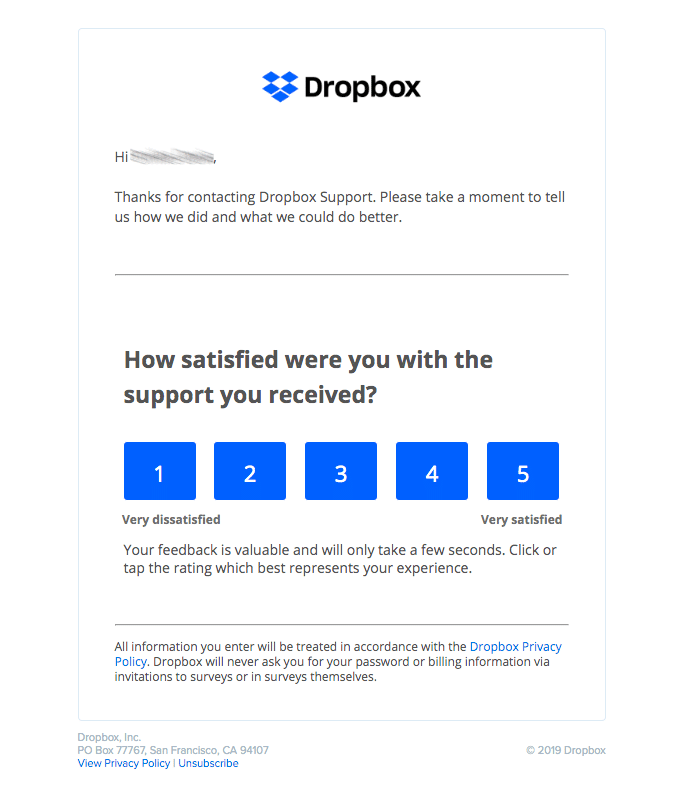
And so the more customer interactions you have, the more feedback you can gather.
22. 66% of customers can’t remember the last time a business exceeded their expectations.18
Takeaway(s): If you think you’re totally behind in terms of customer experience, don’t freak out. Given that two-thirds of businesses aren’t “wowing” customers at the moment, there’s a huge window of opportunity for companies that prioritize experience.
23. 55% of consumers believe that businesses are “behind the times” when it comes to how they interact with customers.19
Takeaway(s): Chances are you’re practically drowning in customer data: don’t waste it!
For example, what are your customers’ preferred methods of contact? How are they finding your business in the first place? What are your most common service questions?
These types of questions and more are likely little more than a click away. Regularly report on your customer interactions and make sure to share those insights with your respective teams (think: sales, support, marketing).
24. 54% of C-level executives say they’ve lost ecommerce customers due to a poor customer experience.20
Takeaway(s): Customer experience research has made it clear that poor experiences result in lost customers. However, the fact that it only takes one bad experience to lose a customer is alarming. This once again signals that the stakes are high when it comes to customer interactions.
25. 80% of consumers point to “speed” as being among the most important elements of a positive customer experience.21
Takeaway(s): No surprises here: speedy service is always appreciated. Companies that can solve their customers’ concerns comprehensively and in a timely manner are more likely to create brand advocates. Doing so means adopting the tools like RingCentral or a CRM that include instant notifications to your support staff whenever someone has an issue.
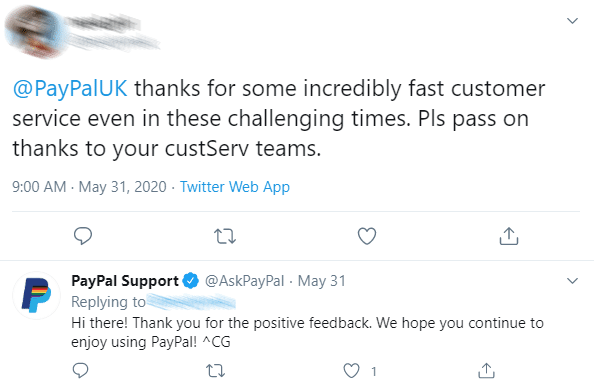
26. 63% of consumers say they’d share more information with a business if it meant receiving a great experience in return.22
Takeaway(s): Companies shouldn’t be shy about asking customers for information or feedback.
After all, customers always have the opportunity to opt-out or keep details to themselves. By asking open-ended questions and giving customers multiple places to leave feedback, you’d be surprised at what your customers are willing to divulge if it means serving them better.
27. 56% of businesses lack adequate self-service options for customers.23
Takeaway(s): Remember what we said earlier about the importance of self-service? Good customer experiences don’t necessarily happen in real time. If a “good” experience to a customer means staying off the phone and taking care of an issue themselves, you should be a-okay with that.
Did any of our customer experience statistics surprise you?
That’s a wrap!
Listen: modern customers crave great experiences. From being flexible and empathetic to using data to better serve your buyers, there are plenty of ways businesses today can step up their game.
If you’re interested in learning more about customer experience stats, download the Customer Communications Review.
1, 2, 4, 5, 6 c1.sfdcstatic.com/content/dam/web/en_us/www/documents/reports/salesforce-research-third-edition-state-of-service.pdf
3,7 gartner.com/en/doc/3874972-realizing-the-benefits-of-superior-customer-experience-a-gartner-trend-insight-report
8 gartner.com/en/confirmation/doc/375892-crm-strategy-and-customer-experience-primer-for-2019
9 marketingprofs.com/charts/2020/42560/cx-in-b2b-marketing-top-of-mind-strategy-in-2020
10 ascend2.com/us/en/blog/wp-content/uploads/2019/09/Ascend2-Customer-Experience-Survey-Summary-Report-1900916.pdf
11, 12 csgi.com/resources/great-cx-cuts-cost-and-drives-business-results
13 qualtrics.com/xm-institute/what-happens-after-a-bad-experience-2019
14 adobe.com/uk/offer/digital-trends-2020.html
15 go.medallia.com/setting-the-standard-for-cx-in-b2b.html
16, 18, 19 acquia.com/resources/ebooks/closing-cx-gap-customer-experience-trends-report
17 marketingcharts.com/charts/data-sources-used-customer-experience-professionals-decision-making/attachment/netbase-data-sources-for-cx-decision-making-oct2018
20 marketingsherpa.com/article/chart/marketing-budget-charts-b2b-customer-experience-investments?_ga=2.247795407.97437634.1592938803-1771824363.1592938803
21 pwc.com/us/en/advisory-services/publications/consumer-intelligence-series/pwc-consumer-intelligence-series-customer-experience.pdf
22, 23 gartner.com/en/documents/3894096/four-best-practices-for-implementing-extreme-customer-se
Originally published Jul 01, 2020, updated Jul 24, 2024





